Latest News
Unveiling the Causes: Control Tower Warnings and the South Korea Plane Crash

Contents
Introduction: The Tragic Incident
On a fateful day in South Korea, the aviation community was rocked by a devastating plane crash that claimed numerous lives and raised urgent concerns regarding air safety protocols. This tragic incident not only impacted the families of the victims but also served as a grim reminder of the challenges faced in the field of aviation. With millions of passengers flying every day, the significance of ensuring their safety cannot be understated; thus, this event has called for a critical examination of the factors that contributed to this disaster.
The aircraft, a commercial passenger plane, was nearing its destination when it encountered a catastrophic failure. As investigators began to piece together the sequence of events leading up to the crash, attention quickly turned toward the warnings issued by the control tower. Reports indicated that there had been prior alerts regarding potential avian hazards in the vicinity, which may have played a crucial role in the unfolding tragedy. Bird strikes, which occur when birds collide with aircraft, can lead to severe damage and pose serious risks to flight safety. However, the effectiveness of communication between control tower personnel and flight crews is integral in preventing such occurrences.
This tragic incident underscores the importance of rigorous safety measures in aviation. It emphasizes the pressing need for streamlined communication between control towers and pilots to ensure that vital warnings are received and acted upon promptly. Additionally, investigations into this incident are likely to scrutinize the existing protocols for responding to control tower advisories, particularly concerning bird strike alerts. As air travel continues to evolve, lessons learned from such unfortunate events must inform future policy changes aimed at enhancing safety standards in the airline industry.
Overview of the Control Tower’s Role
Air traffic control towers are essential components of modern aviation, serving as the backbone for safe and efficient flight operations. These towers are responsible for managing the movement of aircraft both in the air and on the ground, ensuring that flights adhere to established protocols while minimizing the risk of accidents. The primary responsibilities of air traffic controllers include the provision of clearances for takeoff and landing, coordination of flight paths to prevent collisions, and monitoring weather conditions to inform pilots of any potential hazards that may affect their flights.
In the complex environment of air traffic management, the control tower plays a pivotal role in issuing warnings during various scenarios. When an aircraft encounters a potential hazard, such as a bird strike, the procedure initiated by the control tower becomes critical. Controllers are trained to assess the situation rapidly and communicate essential information to pilots to help them make informed decisions. This communication can involve providing timely updates about the presence of birds near the flight path or advising on necessary evasive maneuvers. The effectiveness of these warnings is largely dependent on the accuracy and speed of the information relayed by the control tower.
Moreover, the integration of technology also supports air traffic controllers in fulfilling their responsibilities. Advanced radar systems and surveillance equipment enable controllers to track multiple flights simultaneously, enhancing situational awareness. Additionally, automated systems provide alerts for imminent threats, further assisting controllers in their decision-making processes. This coordination between human expertise and technology helps maintain the highest safety standards in aviation, reaffirming the indispensable role of control towers in preventing incidents and ensuring a secure environment for both passengers and crew.
Understanding Bird Strikes and Their Risks
Bird strikes refer to collisions between birds and aircraft, typically occurring during critical phases of flight such as takeoff and landing. These incidents pose a significant risk to aviation safety and can result in substantial damage to aircraft, as well as endangering the lives of passengers and crew. The frequency of bird strikes has been on the rise, particularly in regions with diverse avian populations and busy airports. According to the Federal Aviation Administration (FAA), bird strikes are reported thousands of times annually, underscoring the importance of addressing this issue within the aviation industry.
The risks associated with bird strikes vary depending on the size and type of bird involved. While smaller birds may cause limited damage, larger species, such as geese or hawks, can lead to catastrophic outcomes, including engine failures or significant structural damage. Statistics indicate that, on average, bird strikes result in one or two fatal accidents in commercial aviation each year, although injuries and near-misses are far more common. The interaction between birds and aircraft is highly unpredictable, making it crucial for airlines and airports to implement preventive measures and training protocols for pilots and ground staff.
Preventive strategies include the use of radar systems to detect bird activity, habitat management around airports, and community outreach to educate the public on minimizing wildlife attractants. Despite these measures, the potential for bird strikes remains a persistent threat, highlighting the need for continuous monitoring and research into effective mitigation strategies. The aviation community must remain vigilant as they confront the evolving challenges posed by bird strikes, ensuring that safety remains the top priority as air travel continues to grow.
Sequence of Events Leading to the Crash
The tragic plane crash in South Korea can be attributed to a series of critical events that unfolded just moments prior to the incident. The sequence began with the control tower issuing a warning about a potential bird strike approximately ten minutes before the scheduled takeoff. This warning was relayed to the flight crew of the aircraft, who were already preparing for departure. Recognizing the severity of the situation, the crew initiated their layered safety protocols to ensure the aircraft was properly equipped to handle such an unforeseen hazard.
Following the warning, the flight crew engaged in a discussion regarding the response to the bird strike advisory. Their initial approach was to perform a thorough check of the aircraft systems, as well as increase their vigilance regarding any potential airborne obstacles on the runway. However, during this critical time, the crew encountered unexpected technical issues that further compounded their concerns. This series of complications included communication difficulties that hindered their ability to receive real-time updates from the control tower.
As the clock ticked down towards departure, the crew made the decision to proceed after assessing that the initial risks were manageable. Unfortunately, a miscalculation emerged when they underestimated the likelihood of a bird strike during takeoff. As the aircraft ascended into the air, the environment around them was filled with chipper sounds of birds, one of which collided with the plane, resulting in significant damage to the engines.
Despite the crew’s best efforts to maintain control of the aircraft, the impact of the bird strike proved catastrophic, leading to a rapid loss of altitude. The tragic sequence of events illustrated how a convergence of warnings, decision-making under pressure, and unforeseen complications can culminate in disaster. Such an analysis serves as a crucial reminder of the importance of thorough communication and comprehensive responses to safety alerts in aviation.
Investigation Findings: What Went Wrong?
The investigation into the South Korea plane crash unveiled several crucial factors contributing to the tragic incident. Central to the findings was a failure in communication between the cockpit crew and the control tower. Evidence indicated that the pilots received multiple warnings from the control tower regarding their flight’s altitude and course deviation. However, a combination of misinterpretations and distractions resulted in a delayed response, exacerbating the situation.
Attention was drawn to the protocols in place for cockpit resource management (CRM). The investigation revealed that not all crew members actively participated in decision-making processes or effectively communicated concerns. The hierarchical culture in the cockpit may have stifled the second officer’s ability to voice observations, particularly during critical moments. This resulted in a lack of collaborative input that could have potentially altered the flight course or mitigated risks in response to control tower warnings.
Additionally, technical issues were examined in the analysis of cockpit instruments. The investigation revealed that some warning systems were not functioning optimally, leading to confusion about instrument readings. This malfunction not only compromised the crew’s situational awareness but also hindered their ability to respond to the alerts from the control tower with the urgency required.
Human factors also played a significant role in the tragedy. Pilot fatigue, stemming from long working hours and insufficient rest periods prior to the flight, may have negatively impacted their cognitive functions and decision-making abilities. Understanding these factors emphasizes the need for rigorous adherence to both communication protocols and crew welfare to prevent such missteps in the future.
In summary, the investigation into the plane crash in South Korea highlighted critical lapses in communication, compliance with protocols, and the overall human factor that contributed to a failure in responding effectively to control tower warnings. Addressing these elements is vital for enhancing aviation safety and preventing similar occurrences in the future.
Implications for Aviation Safety Protocols
The tragic plane crash in South Korea highlights the critical need for reviewing and enhancing aviation safety protocols, particularly those pertaining to control tower operations and pilot training. Effective air traffic control is paramount to ensuring the safety of flights, necessitating that control towers operate with utmost precision and adhere to established guidelines. Following this incident, it is evident that there may be lapses in communication and decision-making processes that require immediate rectification. This emphasizes the importance of establishing clearer lines of communication between pilots and controllers to minimize misunderstandings.
Moreover, pilot training programs must be revisited to incorporate advanced simulation scenarios that mirror real-world challenges, including emergency situations. Enhanced training will equip pilots with the necessary skills to respond effectively when faced with unforeseen circumstances. Emphasizing decision-making under stress and crisis management can contribute significantly to improving overall aviation safety. Instituting regular training sessions and assessments can help ensure pilots remain proficient in the latest operational procedures and safety protocols.
Additionally, the integration of technology in aviation safety measures cannot be understated. This incident suggests the need for better situational awareness tools for both pilots and air traffic controllers. The use of automated systems and real-time data analytics can assist in detecting anomalies in flight operations early on, thus enabling timely interventions. Implementing these technological advancements may prove effective in mitigating risks associated with human error.
Ultimately, reinforcing safety measures following the South Korea plane crash will require a collaborative effort among regulatory bodies, airlines, and training institutions. By fostering a culture of continuous improvement in aviation safety protocols, the industry can work towards preventing similar tragic events in the future.
Lessons Learned from the Incident
The devastating plane crash in South Korea serves as a grim reminder of the complexities and challenges that the aviation industry faces. One of the most significant lessons learned from this incident is the critical importance of effective communication between all parties involved in aviation operations. Clear, concise communication among air traffic controllers, pilots, and ground staff is essential for maintaining situational awareness and ensuring that everyone is aligned on operational protocols. Any lapse in communication can lead to misunderstandings that might have catastrophic consequences.
Another vital lesson relates to preparedness for unexpected hazards. This incident underscores the necessity for airlines and aviation authorities to conduct thorough risk assessments that account for all potential scenarios, including those that are rare but can lead to severe outcomes. Training programs must include comprehensive drills designed to simulate unusual situations, which empower crews to respond efficiently and decisively when faced with unforeseen challenges. Establishing a culture of safety that encourages proactive thinking among all personnel is instrumental in averting potential crises before they escalate.
The integration of new technologies also plays a crucial role in enhancing aviation safety. Innovations such as advanced warning systems, real-time data analytics, and artificial intelligence can significantly improve decision-making processes and response times during critical situations. These tools enable flight crews to access crucial information swiftly, thus increasing their effectiveness in addressing issues as they arise. Embracing such technological advancements not only enhances safety but also fosters a culture of continuous improvement within the aviation community.
By reflecting on the tragic events leading to the South Korea plane crash, the aviation industry can take actionable steps to avert similar incidents in the future, highlighting the imperative of communication, preparedness, and technological integration to safeguard lives.
The Role of Technology in Preventing Bird Strikes
Bird strikes pose a significant hazard to aviation safety, prompting the development and implementation of various technological advancements aimed at reducing these risks. One of the primary tools in combating bird strikes is the utilization of advanced radar systems designed specifically for wildlife detection. These systems are capable of identifying flocks of birds in the vicinity of an airport, providing critical real-time information to air traffic controllers and pilots. The integration of radar technology allows for early warning systems that can influence flight path decisions and minimize the chances of a bird strike during take-off and landing.
In addition to radar, wildlife management efforts at airports play a crucial role in minimizing interactions between aircraft and birds. This includes initiatives such as habitat management, which involves altering the landscape around airports to make it less attractive to birds. For instance, maintaining grass at a certain height or removing standing water can deter birds from nesting or gathering near runways. These management strategies are bolstered by technology that tracks bird populations and their migratory patterns, allowing airport authorities to proactively address potential threats.
Furthermore, the effectiveness of these technological measures relies heavily on their integration into standard operating procedures. It is not sufficient to implement advanced systems without ensuring that airport personnel and pilots are trained to respond appropriately to the data provided. Regular drills and simulations can enhance situational awareness among staff, leading to expedited and informed decision-making when a potential bird strike is detected. Therefore, bridging the gap between technology and human factors is essential for improving overall aircraft safety and mitigating the risks associated with bird strikes.
Summary : The Path Forward for Aviation Safety
The recent plane crash in South Korea serves as a poignant reminder of the ongoing challenges facing aviation safety. This incident, driven by overlapping factors such as adverse weather conditions, inadequate communication, and critical control tower warnings, highlights the multifaceted nature of aviation risks. Each element of this tragic event has underscored the pressing need for heightened awareness and improved protocols within the aviation industry.
Learning from such incidents is imperative for fostering a culture of continuous improvement in aviation safety. Stakeholders, including airline operators, air traffic controllers, and regulatory authorities, must collaboratively address the complexities inherent in air travel. One significant area of focus is the enhancement of communication systems between pilots and air traffic control. Effective dialogue can mitigate misunderstandings that may lead to catastrophic scenarios.
Also read : A Tribute to a Visionary: Remembering Former PM Manmohan Singh at 92
Moreover, there is an urgent necessity to evaluate and strengthen existing safety measures that address bird strikes, which were a contributing factor in this case. Implementing advanced detection systems and developing better wildlife management strategies around airports can significantly reduce the risk of such incidents. Investing in research to understand the dynamics of bird behavior near airfields is essential to crafting effective preventative measures.
In essence, the aviation industry must adopt a proactive stance towards safety by fostering collaboration among various stakeholders. By learning from past tragedies and enhancing communication and safety protocols, the goal of ensuring the highest standards in aviation safety can be realized. Embracing this pathway not only honors those affected by previous incidents but also protects the passengers and crews of tomorrow’s flights, ultimately leading to a safer aviation environment for all.
Delhi/NCR
Pm-Modi-degree-privacy-ruling-legal-implications
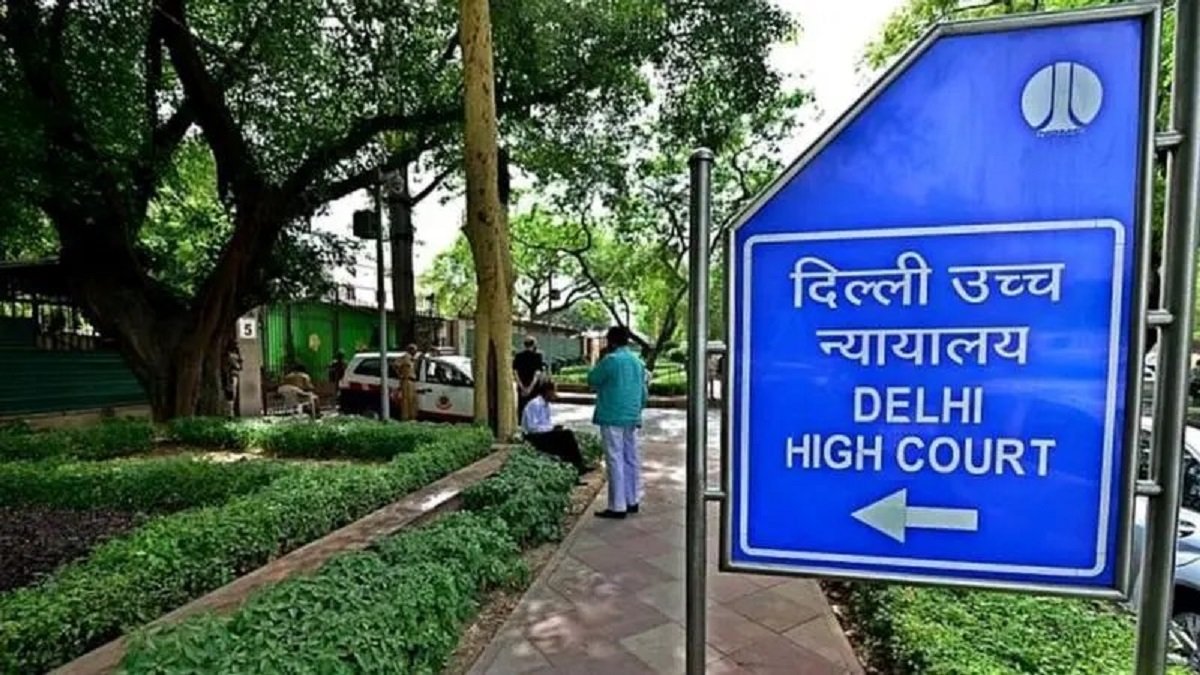
Contents
New Delhi, Aug.25,2025:In 2016, RTI activist Neeraj Kumar filed a request under the RTI Act seeking details of all students passed in DU’s BA exams of 1978—including roll numbers, names, marks, and results—coincidentally the year PM Modi graduated
PM Modi degree privacy ruling explained
PM Modi degree privacy ruling has now become a landmark legal benchmark. On August 25, 2025, the Delhi High Court formally set aside the Central Information Commission’s (CIC) 2016 order demanding disclosure of Prime Minister Narendra Modi’s 1978 BA degree records from Delhi University (DU). This decision reasserts the sanctity of private academic records, even for public officials, as protected personal data.
RTI, CIC order, and DU’s challenge
The 2016 RTI Application
In 2016, RTI activist Neeraj Kumar filed a request under the RTI Act seeking details of all students passed in DU’s BA exams of 1978—including roll numbers, names, marks, and results—coincidentally the year PM Modi graduated.
CIC’s 2016 Directive
The CIC, in December 2016, ruled that universities are public bodies, and academic registers qualify as public documents. It directed DU to allow inspection of those records.
University’s Legal Stand
DU contested, asserting that:
- Information is held in a fiduciary capacity.
- Disclosure for mere curiosity contravenes RTI limitations.
- It had no problem providing records only in court, not for random public access.
The High Court Verdict
Justice Datta’s Rationales
Justice Sachin Datta of the Delhi High Court ruled in DU’s favor, quashing the CIC directive entirely.
Privacy vs. Public Curiosity
The court emphasized that being of public interest differs fundamentally from public curiosity. Educational qualifications—even of the Prime Minister—fall under protected personal information as per Section 8(1)(j) of the RTI Act.
Legal Principles and Fiduciary Duty
Academic Records as Personal Data
Academic records—such as marks, grades, roll numbers—are inherently personal and cannot be disclosed without compelling public interest. The court stressed the confidential nature of such data.
Fiduciary Trust at Play
The judgment recognized the fiduciary relationship between students and the university, comparable to doctor–patient trust. Disclosure to strangers, for no substantive reason, would violate that trust.
Implications of the Ruling
Setting Precedent on Privacy
This verdict reinforces that even public figures retain fundamental privacy in their personal data. It underscores that RTI is not an open door to satisfying sensational queries.
RTI Limits Reasserted
The court reaffirmed that the RTI Act is not a tool for trivial intrusion—particularly when longstanding exemptions like fiduciary confidentiality apply.
Politics, Privacy, and Precedent
- Political Lens: This ruling could silence persistent demands to publicly audit PM educational credentials.
- Academic Boundaries: Institutions may now lean on fiduciary support to shield student records from undue intrusion.
- Future Cases: Especially relevant for public figures, the decision sets a high bar for “public interest” claims.
Why this PM Modi degree privacy ruling matters now
The PM Modi degree privacy ruling is far more than a procedural win—it’s a statement: personal academic qualifications remain protected, even under RTI. By reaffirming privacy over curiosity, the High Court has struck a balance between transparency and rights. This precedent now stands as a guiding principle in India’s legal-privacy landscape.
Business
Best Deal Oil Purchases India’ Secure Energy Resilience
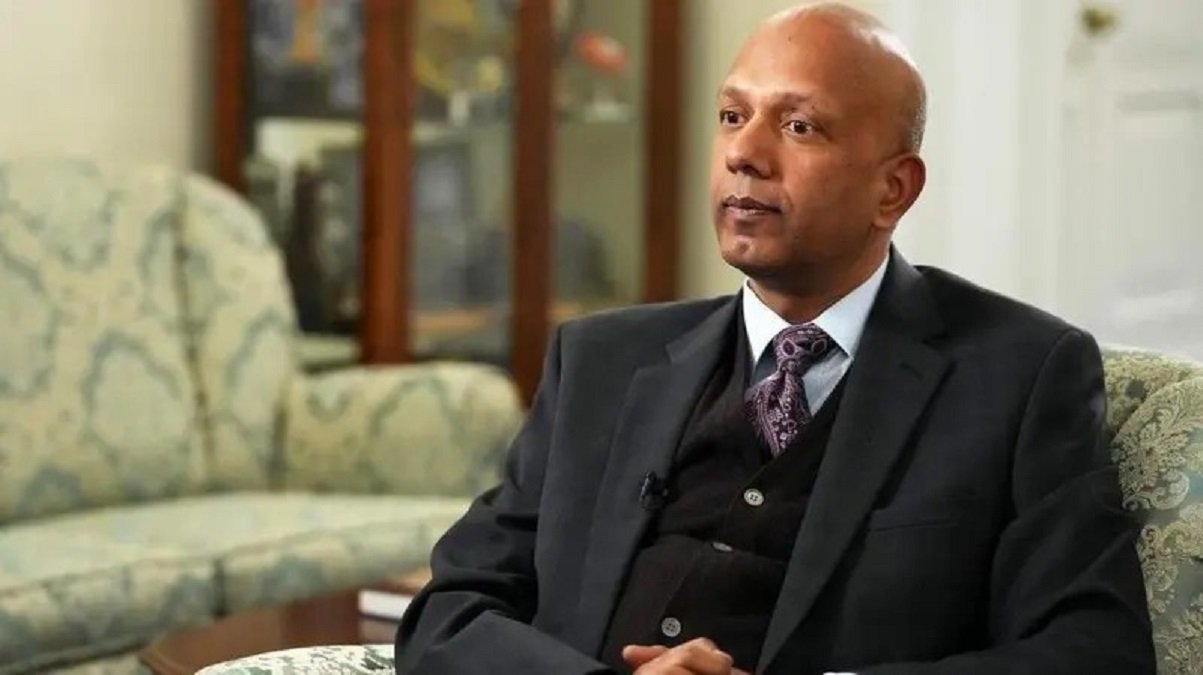
Contents
Russia, Aug.25,2025:India categorically rejected the pressure. The Ministry of External Affairs labeled U.S. tariffs “unfair, unjustified, and unreasonable
best deal oil purchases India in focus
best deal oil purchases India — this phrase captures India’s firm, economy-driven stance: buying oil from the most advantageous sources despite mounting pressure. As global energy tensions rise, India’s strategy underscores the nation’s dedication to energy security for its 1.4 billion people.
India’s Energy Landscape
Rising Energy Demands
India imports nearly 85% of its oil, consuming around 5.5 million barrels per day. Cost-effective supply is vital to manage inflation, fuel subsidies, and industrial costs.
Global Dynamics & Shift to Russian Oil
Following Western sanctions on Moscow after 2022’s Ukraine invasion, Indian imports of discounted Russian crude surged. At times, these accounted for around 40% of India’s total imports.
US Tariffs and Indian Response
Trump’s 50% Tariffs & Strategic Pressure
President Trump escalated tariffs on Indian goods: an initial 25% “reciprocal” duty followed by an additional 25% tied to its Russian oil imports—bringing total tariffs to 50%, among the highest globally.
India Pushes Back: “Best Deal Oil Purchases India”
India categorically rejected the pressure. The Ministry of External Affairs labeled U.S. tariffs “unfair, unjustified, and unreasonable,” affirming that energy procurement is a sovereign matter grounded in national interest.
India’s Defense: Diplomacy & Economic Realism
Ambassador Vinay Kumar’s TASS Interview
Ambassador to Russia Vinay Kumar emphasized that Indian firms will continue buying oil from wherever they secure the best deal, prioritizing commercial viability and national interest:
- “Our objective is energy security for 1.4 billion people… our cooperation with Russia… has helped bring stability to global oil markets.”
- He condemned U.S. tariffs as “unfair, unreasonable and unjustified,” affirming India’s autonomy in energy decisions.
- Payments for Russian oil are seamless through national currency arrangements.4.2 External Affairs Commentary
EAM S. Jaishankar wryly remarked, “It’s funny—people from a pro-business American administration accusing others of doing business.” He added pointedly:
“If you have an issue buying oil from India, don’t. Nobody forces you to. Europe and America both buy.”
Strategic Implications & Trade Maneuvers
India Resumes Russian Oil Imports
Despite initial pause in July, Indian Oil and BPCL resumed buying Russian crude for September and October, spurred by widening discounts (around $3/barrel on Urals grade).
Broader Energy Diversification
India is also exploring alternatives: Iraq, Saudi Arabia, UAE, the U.S., West Africa, Guyana, Brazil, and Canada are being tapped to reduce dependence and enhance supply resilience.
Global Reactions & Strategic Fallout
Voices in the U.S. & Geopolitical Stakes
Critics argue Trump’s tariffs could weaken the U.S.-India partnership, especially within the Quad framework. Former Australian PM Tony Abbott warned the move risks undermining alignment against China.
FT commentators highlighted the inconsistency: India faces penalties while the U.S. and EU continue energy trade with Russia.
Russia’s Firm Support
Russia expressed readiness to expand trade with India in light of U.S. tariffs. Charge d’Affaires Roman Babushkin affirmed: “Friends don’t behave like that,” criticizing Washington’s actions as unfair.
Why best deal oil purchases India matters
The phrase best deal oil purchases India embodies India’s calculated response to geopolitical coercion—prioritizing energy security, market dynamics, and strategic autonomy. While the U.S. escalates tariff pressure, India remains resolute, pursuing affordable, diversified energy sources in line with its national imperatives.
Delhi/NCR
Dhankhar Resignation Health Reasons – Mystery Or Clarity
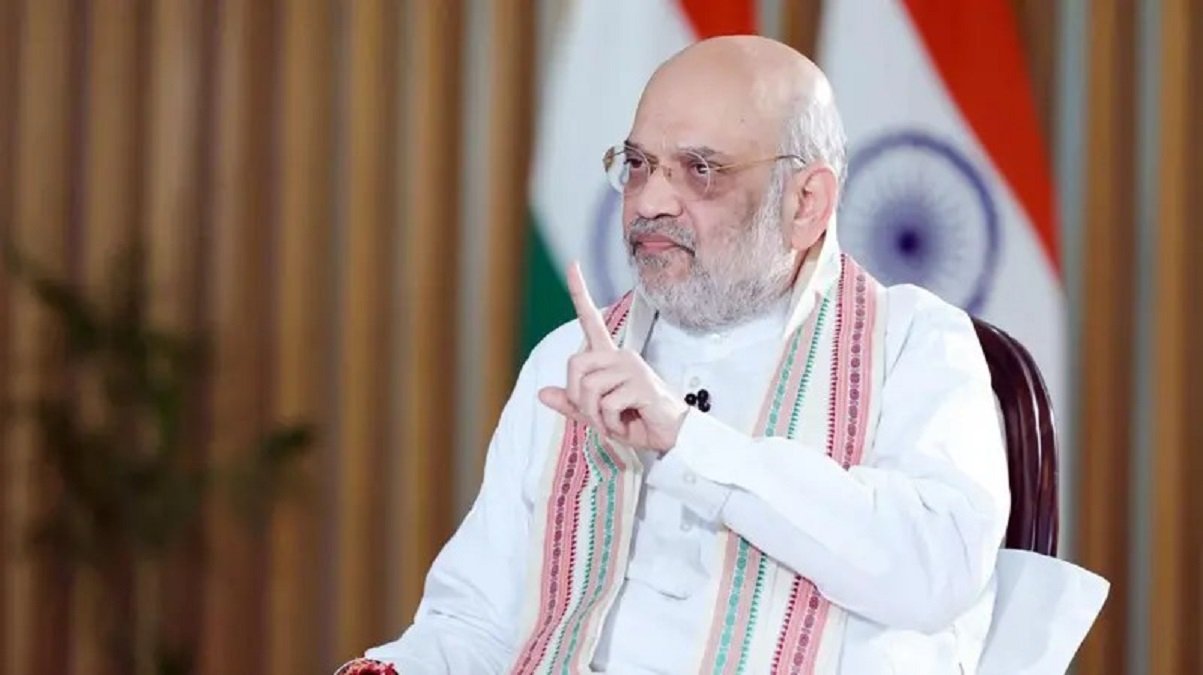
Contents
New Delhi, Aug.25,2025:Jagdeep Dhankhar served as India’s 14th Vice President from August 11, 2022, until his unexpected resignation on July 21, 2025. A seasoned lawyer turned politician
Dhankhar resignation health reasons take spotlight
Dhankhar resignation health reasons dominate headlines today. After a dramatic mid-term resignation, Union Home Minister Amit Shah attributes the decision purely to medical concerns. Yet the void left by former Vice President Jagdeep Dhankhar’s sudden absence has fueled political debate and speculative intrigue.
Who is Jagdeep Dhankhar?
Jagdeep Dhankhar served as India’s 14th Vice President from August 11, 2022, until his unexpected resignation on July 21, 2025. A seasoned lawyer turned politician, he previously held key roles, including Governor of West Bengal and Union Minister of State for Parliamentary Affairs.
What Officially Happened
Health History and Prior Alerts
Dhankhar cited prioritizing healthcare and following medical advice as the reason for his resignation under Article 67(a) of the Constitution. Notably, he faced real health issues earlier—hospitalized at AIIMS for cardiac concerns in March, and fainting at a public event in Uttarakhand in June—lending credence to his health-related claims.
Timeline of the Resignation
His resignation came as a surprise on the opening day of the Monsoon Session (July 21), two years before his term was set to expire.
President Droupadi Murmu accepted it immediately.
“Health Reasons” Clarified
Dismissing ‘House Arrest’ Rumours
Today, on August 25, 2025, Amit Shah addressed widespread speculation, pointing to the clarity in Dhankhar’s resignation letter and stating it was for health reasons alone. He explicitly rejected rumors of Dhankhar being under “house arrest”, urging the public not to overdramatize the situation.
Media Coverage and Reactions
Media outlets echoed Shah’s message, calling the opposition’s accusations “baseless” and describing Shah’s remarks as an effort to “clear the air” around growing curiosity and conspiracy theories.
Mystery Deepens
Congress and Opposition Demands
Opposition leaders remain unconvinced. Congress’s Jairam Ramesh called the sudden silence “deepening the mystery”. Trinamool raised questions in Parliament, while the CPI even wrote to Dhankhar seeking clarity on his disappearance.
Dhankhar’s Post-Resignation Life
Reports since then offer glimpses of Dhankhar’s off-life—playing table tennis and focusing on yoga—painting a picture of someone retreating for wellness, not under duress.
What Could Be Behind The Silence?
Theories abound:
- Sincere health breakdown: Given his recent medical episodes, the resignation could stem from genuine health needs.
- Political pressure: Some allege his departure was orchestrated to sideline potential dissent ahead of critical constitutional decisions.
- Media and timing: The 15-hour delay before a government response raised eyebrows and fed speculation.
Vice-President Elections & Political Implications
Dhankhar’s exit also triggered a competitive VP election scheduled for September 9. NDA has nominated CP Radhakrishnan, while the Opposition has fielded Justice B Sudershan Reddy. Analysts note the reshuffle may have strategic benefits for the ruling party’s positioning.
Dhankhar resignation health reasons or something more?
In essence, Dhankhar resignation health reasons remains the official narrative. Amit Shah’s reassurances and Dhankhar’s quiet, wellness-focused retreats support that. Yet, political undercurrents and the layer of silence continue to fuel debate. Whether this turns out to be a health-motivated departure or an event with deeper implications, the topic is unlikely to fade until the new Vice President takes oath.
International
1971 Unresolved Issues Bangladesh Pakistan – A Bold Demand
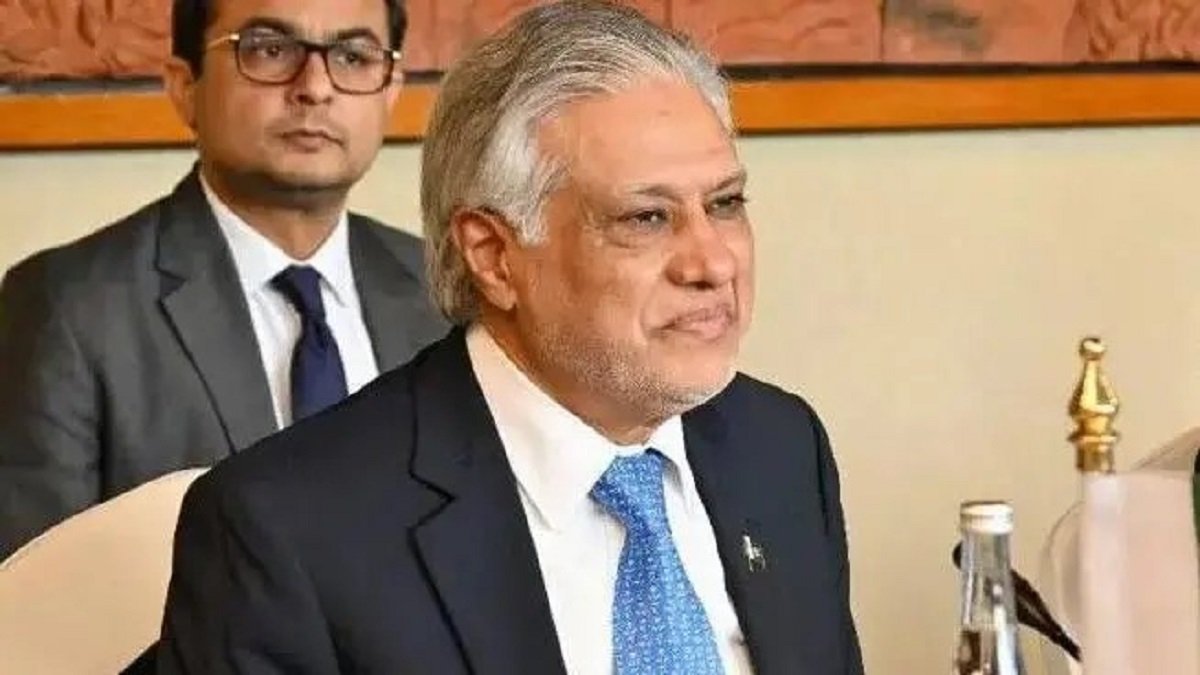
Contents
Bangladesh, Aug.25,2025:The 1971 unresolved issues Bangladesh Pakistan stem from the cruel legacy of the Bangladesh Liberation War, during which mass atrocities occurred
1971 unresolved issues Bangladesh Pakistan in focus
1971 unresolved issues Bangladesh Pakistan remain at the heart of the latest diplomatic exchange between the two nations. While Pakistan claims these issues were resolved twice, Bangladesh firmly disagrees. This tension underscores their complex path toward reconciliation.
Context & Background
The Historical Wounds of 1971
The 1971 unresolved issues Bangladesh Pakistan stem from the cruel legacy of the Bangladesh Liberation War, during which mass atrocities occurred. Bangladesh demands a formal apology, equitable asset division, and resolution of stranded citizens—issues that have persisted for decades.
Past Attempts at Resolution
- 1974: Zulfikar Ali Bhutto visited Dhaka, expressing regret and urging reconciliation.
- 2002: Pervez Musharraf made a visit that included regret expressions but stopped short of a formal apology.
Despite such efforts, no binding solution followed.
Latest Developments: What’s Changed
Diplomatic Surge Under Yunus’ Interim Government
Following Sheikh Hasina’s departure in August 2024, the interim administration led by Nobel laureate Muhammad Yunus pivoted foreign policy. It reignited dialogue with Pakistan through resumed trade, maritime cooperation, and eased visa protocols.
Ishaq Dar’s Visit to Dhaka: Bold Claims, Steady Pressure
In August 2025, Pakistan’s Deputy Prime Minister and Foreign Minister Ishaq Dar visited Dhaka, the highest-level trip in 13 years, aiming to invigorate bilateral ties.
Key Sticking Points Today
Formal Apology for Genocide
Bangladesh demands a clear, formal apology for the 1971 atrocities. Pakistan, however, asserts those issues were already resolved. Ishaq Dar claimed they were settled in 1974 and again during Musharraf’s visit.
Dhaka’s Foreign Adviser Md. Touhid Hossain responded: “Certainly not. If I did, the problem would have been solved,” reaffirming their stance.
Division of Assets & Financial Claims
Divided assets following partition remain unresolved. Bangladesh again brought it forward, alongside demand for funds meant for 1970 cyclone relief.
Repatriation of Stranded Citizens
Bangladesh insists Pakistan repatriate citizens who remained after 1971. Touhid Hossain noted this remains unresolved despite legal rulings.
Progress Made – Agreements & MoUs
Despite core disagreements, tangible progress occurred:
- Visa waiver for official and diplomatic passport holders.
- Six agreements signed, including five MoUs covering:
- Trade cooperation and joint working group
- Cultural exchange
- Foreign service academy collaboration
- Media agency partnership (BSS–APP)
- Think-tank cooperation (BIISS–ISSI)
Dhaka’s Firm Response & Strategy
Bangladesh made its position clear: core historical grievances cannot be glossed over. Touhid Hossain stressed that resolution requires dialogue, not denial.
Media outlets reported that Dhaka was “shocked” by Pakistan’s silence on apology, seeing it as a missed diplomatic gesture.
Outlook & Challenges
Analysts underscore cautious optimism. While both sides reiterated intent to resolve long-standing issues through talks, they acknowledged that decades of history can’t be settled overnight.
Regional experts suggest that engaging in people-to-people, educational, and business exchanges, while carefully navigating India’s influence, may strengthen ties.
From Reckoning to Reconciliation
The 1971 unresolved issues Bangladesh Pakistan encapsulate deep historical wounds that demand respect, acknowledgement, and careful diplomacy. While Pakistan proclaims closure, Bangladesh clearly rejects that narrative without formal apology, equitable asset resolution, and repatriation commitment.
Nonetheless, new agreements and MoUs symbolize a fragile but hopeful start. Should both sides continue constructive dialogue, there’s a possibility of transforming this troubled legacy into a foundation for a stable, respectful, and forward-looking partnership.
Education
Sahodaya-Collaboration-Summit-Jaipur-educational-transformation
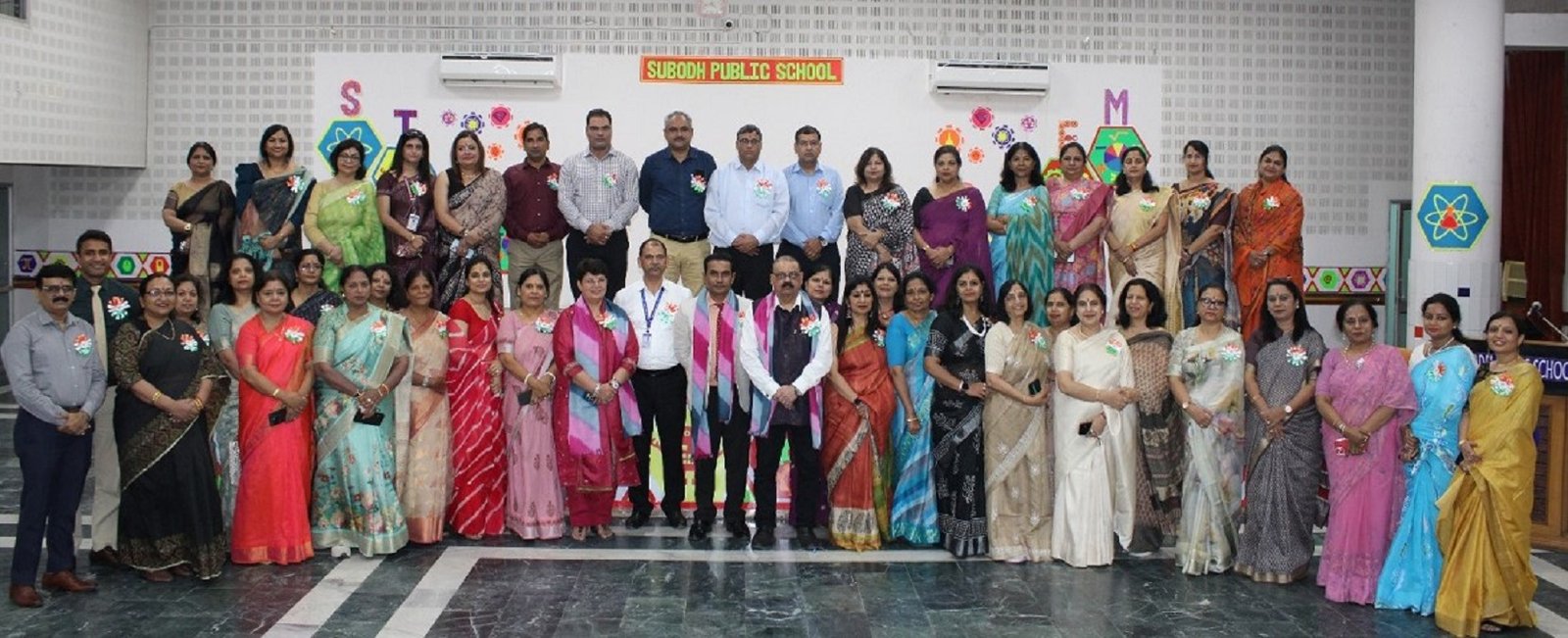
Contents
Jaipur, Aug.25,2025:The Sahodaya Collaboration Summit turned Subodh Public School into a hub of collaborative energy. Educators from across the Jaipur Sahodaya network—including
Sahodaya Collaboration Summit began with urgency and optimism at the opening of the meeting — an emblem of partnership, leadership, and educational vision. Held on August 23, 2025, at Subodh Public School, Rambagh, Jaipur, this momentous gathering marked a renewed commitment to collective growth among member schools of the Jaipur Sahodaya Schools Complex.

The Vibrant Gathering at Jaipur Sahodaya
The Sahodaya Collaboration Summit turned Subodh Public School into a hub of collaborative energy. Educators from across the Jaipur Sahodaya network—including principals, secretaries, and communication leads—gathered to share strategies for innovation, overcoming challenges, and nurturing academic excellence together.
In these lively sessions, leaders candidly discussed membership roles, social justice through equal educational access, and how to scale up imaginative pedagogies. The ambiance was one of unity, rooted in shared mission and rising higher together.

Leadership That Inspired
President’s Vision
The meeting honored Shri Ashok Vaid Ji, whose vision and steady guidance elevated the summit. With thoughtful insight, he facilitated reflective conversations and steered the group toward purposeful planning.
Secretary & Joint Secretary’s Support
A heartfelt thank-you was extended to Shri Puneet Tyagi Ji, the dynamic General Secretary whose unwavering encouragement kept the energy high, and to Smt. Manju Khosla Ji, the graceful Joint Secretary, whose goodwill and supportive presence added warmth to the summit’s mood.
Transparent Elections and New Office Bearers
In a testament to both fairness and collaboration, the Sahodaya Collaboration Summit concluded with the transparent election of new office bearers. Candidates were thoughtfully selected—and the vote was conducted with sincerity and respect.
The newly appointed team includes:
- Dr. Sanjay Parashar – Vice President
- Dr. Sandeep Kulhari – Treasurer
- Ms. Karuna Nagpal – Executive Member
Their induction reflects the summit’s commitment to energizing leadership with fresh perspectives.
What the New Team Brings to the Table
Each new member comes equipped with a wealth of talent and promise:
- As Vice President, Dr. Sanjay Parashar is expected to amplify student-centric policies and help drive pedagogical innovation.
- Treasurer Dr. Sandeep Kulhari brings fiscal stewardship and operational discipline to enhance resource management.
- Ms. Karuna Nagpal, as Executive Member, will ensure the continued development of collaborative initiatives that span the network.
Together, this team embodies the synergy and trust that the Sahodaya ethos stands for.
Sahodaya Collaboration Summit’s Broader Impacts
This Summit wasn’t just a meeting—it was a dynamic catalyst for change. The Sahodaya Collaboration Summit motivates member schools to:
- Exchange best practices—ranging from pedagogy to community engagement.
- Develop joint programming—such as workshops, seminars, and student activities like debates, exhibitions, and sports meets.
- Advocate for inclusive education—ensuring equitable access for all segments of society, aligned with CBSE’s mission since Sahodaya’s inception.
With energized leadership and a spirit of collaboration, the summit has set the stage for what’s next:
- Shared Action Plans across schools for curricular excellence and teacher development.
- Inter-school activities, including initiating upcoming workshops, exhibitions, and seminars.
- Strengthened engagement with CBSE guidelines, NEP 2020 integration, and national education goals.
The Sahodaya Collaboration Summit at Jaipur stands as a testament to collective resolve, leadership, and community-focused transformation. As schools continue to learn, unlearn, and relearn through shared wisdom, the future of education in Jaipur shines brighter than ever.
Business
India-Russia Oil Dispute laid bare — 7 bold truths as Jaishankar slams U.S. accusations at the World Leaders Forum
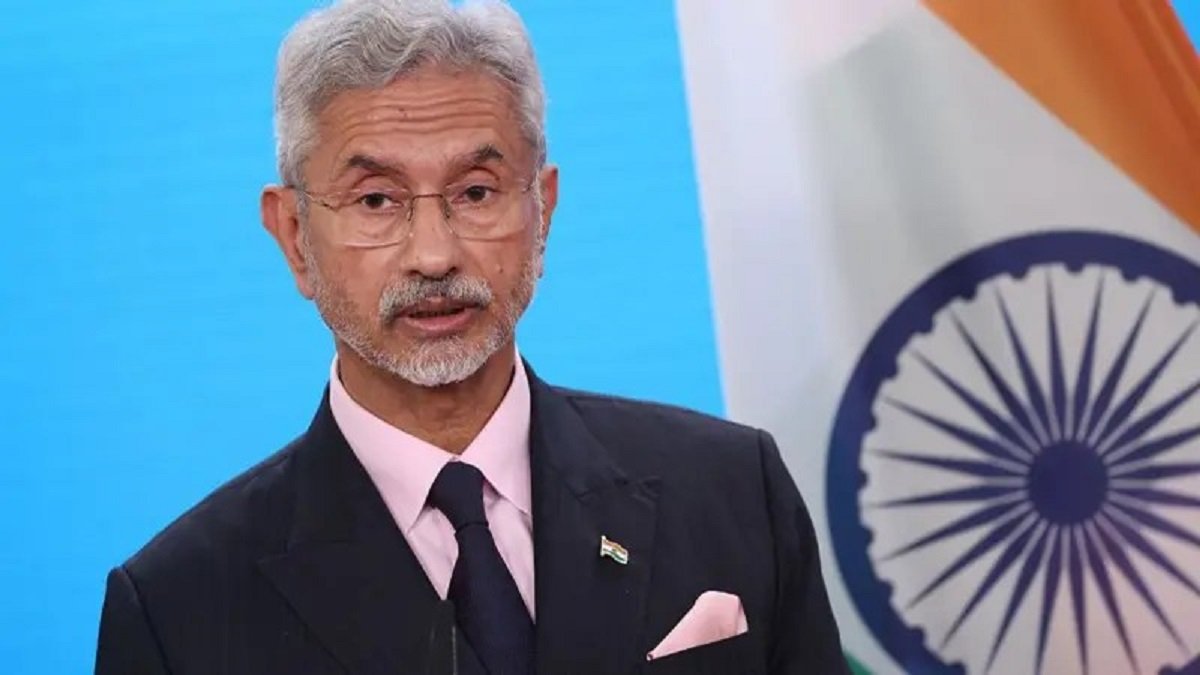
Contents
New Delhi, Aug.23,2025:Jaishankar’s pointed comeback—“If you don’t like it, don’t buy it”—served as a powerful assertion of India’s right to independent trade decisions
India-Russia Oil Dispute: Unpacking the Buzz
The India-Russia Oil Dispute erupted into the spotlight when U.S. officials accused India of profiting from Russian oil—alleging that India had become a refining “laundromat,” indirectly funding Russia amid the Ukraine war. At the Economic Times World Leaders Forum 2025, External Affairs Minister S. Jaishankar responded forcefully, defending India’s sovereign energy choices.
“If you don’t like it, don’t buy it” — Sovereignty First
Jaishankar’s pointed comeback—“If you don’t like it, don’t buy it”—served as a powerful assertion of India’s right to independent trade decisions. He criticized those in a “pro-business American administration” for meddling in India’s affairs.
Energy Strategy Is Global, Not Just Indian
Beyond national priorities, Jaishankar emphasized that India’s Russian oil purchases also contributed to global energy stability. In 2022, amidst surging prices, allowing India to import Russian crude helped calm markets worldwide.
Tariffs and Trade Talks — India Holds the Red Lines
With the U.S. imposing up to 50% tariffs on Indian goods tied to energy policy, Jaishankar reiterated that while trade discussions with Washington continue, India will not compromise on protecting farmers, small producers, and its strategic autonomy.
Double Standards—Not Just About India
Jaishankar called out the hypocrisy in targeting India alone. Critics have ignored that larger energy importers, including China and the EU, have not faced similar reproach for their Russian oil purchases.
No Third-Party in Indo-Pak Ceasefire
Amid U.S. claims of mediating the 2025 India–Pakistan ceasefire, Jaishankar made it clear that India rejects any third-party intervention. A national consensus has existed for over 50 years—India handles its ties with Pakistan bilaterally.
Operation Sindoor and Direct Military De-escalation
Regarding Operation Sindoor, launched after the April 22 Pahalgam attack, Jaishankar confirmed that the cessation of hostilities resulted directly from military-to-military discussions. There were no links to trade or external pressure.
U.S. Ceasefire Claims and Indian Rebuttal
While the U.S. touted its role in brokering the ceasefire—via President Trump, VP Vance, and Secretary Rubio—India maintained the outcome was reached bilaterally and without diplomatic backdoor deals.
What Lies Ahead for the India-Russia Oil Dispute?
The India-Russia Oil Dispute unveils deeper geopolitical crosscurrents. It reflects India’s balancing act—asserting sovereignty over energy choices while defending national interests in the face of mounting foreign pressure. Simultaneously, India’s unwavering stance on ceasefire diplomacy reinforces its preference for autonomy over dependency. As global tensions simmer and trade spat heats up, India’s resolve and strategic clarity remain unmistakable.
India
India-Pakistan Cricket Objection: Sanjay Raut’s Unmissable Letter

Contents
Mumbai, Aug.23,2025:In his letter, Sanjay Raut asked: “Will blood and cricket flow together?” He highlighted that despite “Operation Sindoor” still being unfinished
India-Pakistan Cricket Objection
The India-Pakistan Cricket Objection surfaced dramatically when Shiv Sena (UBT) MP Sanjay Raut sent a strongly worded letter to Prime Minister Narendra Modi in late August 2025. He protested India’s participation in the Asia Cup match scheduled against Pakistan on September 14, 2025, in Dubai.
The Letter: Will Blood and Cricket Flow Together?
In his letter, Sanjay Raut asked: “Will blood and cricket flow together?” He highlighted that despite “Operation Sindoor” still being unfinished and the wounds from the Pahalgam terror attack not healed, India agreeing to such a match is “painful and insensitive.”
He tagged PM Modi, Union Home Minister Amit Shah, and the BCCI, publicly criticizing the government for granting clearance.
Operation Sindoor and Ongoing Threats
Raut emphasized that Operation Sindoor, India’s ongoing counter-terrorism campaign, continues to pose threats—suggesting that sporting ties with Pakistan now strain credibility in India’s security stances.
Martyr Families and Emotional Costs
Citing the Pahalgam terror attack—where 26 people were killed, many leaving behind grieving families—Raut questioned whether their pain was respected. He called the match a “sprinkling of salt on fresh wounds.”
Accusations of Political and Financial Motives
Raut cast doubt on the government’s neutrality by referencing Jay Shah, son of Home Minister Amit Shah and Secretary of the BCCI. He suggested potential politically motivated or financial interests in approving the match.
Betting, Gambling, and Governance Questions
He also raised concerns about betting and online gambling, areas where India–Pakistan matches often attract massive stakes. He hinted at involvement of political figures in these networks.
Hindutva, Patriotism, and Local Opposition
Raut argued that the match not only disrespects soldiers’ sacrifices but also undermines Hindutva and patriotism. He stated that, had the match been scheduled in Maharashtra, Shiv Sena under Bal Thackeray’s legacy would have “stopped it.”
Broader Political Reactions & External Commentary
Other political leaders echoed Raut’s objections. Aaditya Thackeray condemned the BCCI’s profit focus over national sentiment, calling it a “shameful act.”
In contrast, the Samajwadi Party branded the decision as “nothing less than shameless” and urged a boycott of the match.
What Doesn’t Play Well on the Field
The India-Pakistan Cricket Objection is not just about a match—it’s a nexus of national security, emotional wounds, political accountability, public sentiment, and ethical governance. Sanjay Raut’s letter, backed by similar protest voices, challenges the optics and implications of playing cricket with Pakistan amid ongoing cross-border tensions. The objections raised probe deep into how sports intersect with patriotism, policy, and public emotion.
International
FBI raid on John Bolton sets off a shocking national security firestorm — learn the explosive details, political ripple effects
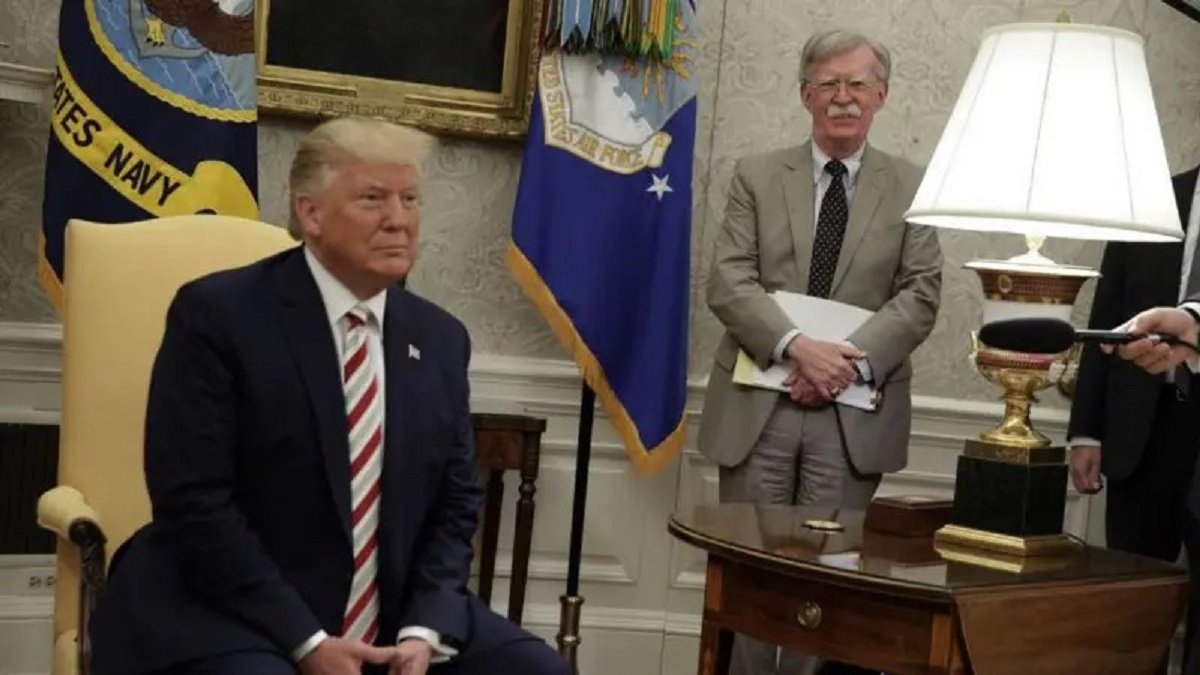
Contents
US, Aug.23,2025:The raid underscores enduring tension around handling classified material by former officials. Legal experts emphasize a need for clarity on norms and accountability in
FBI Raid on John Bolton Hits at Dawn
The FBI raid on John Bolton occurred during the early hours of August 22, 2025, targeting his Bethesda, Maryland residence and his Washington, D.C. office. Agents collected boxes, but Bolton—absent at home—was seen briefed by agents at his office lobby.
Prompt Judicial Sign-off and Legal Grounds
A federal magistrate judge authorized the searches, signaling probable cause in the handling of classified information. Officials cited that this stemmed from a revived investigation dating back to 2020—originally paused under the Biden administration.
A Broader Classified Documents Probe
Though Bolton’s 2020 memoir, “The Room Where It Happened”, was previously under scrutiny, the current inquiry reportedly spans other documents and communications—suggesting a wider scope than the book alone.
Trump’s Reaction — Surprise and Snide Remarks
President Donald Trump claimed no prior knowledge of the raid, calling Bolton a “real lowlife” and an “unpatriotic guy.” He emphasized, “I don’t want to know about it,” distancing himself from the operation.
New DOJ/FBI Positions Signal Political Posturing
FBI Director Kash Patel posted cryptically on X: “NO ONE is above the law…”, while Attorney General Pam Bondi invoked justice as non-negotiable. VP J.D. Vance insisted the action was law-driven, not politically motivated. Yet, critics warn it mirrors selective legal targeting.
Bolton’s History as a Trump Critic
Once Trump’s National Security Advisor (2018–19), Bolton turned into a vocal critic post-2019, especially through his explosive memoir. His past policy clashes make him a prominent target in the context of the current probe.
Implications for National Security Process
The raid underscores enduring tension around handling classified material by former officials. Legal experts emphasize a need for clarity on norms and accountability in safeguarding sensitive information.
Global Policy Echoes — India Tariffs & Beyond
Bolton has recently criticized Trump’s tariffs on India, suggesting they undermine strategic ties. The timing of this raid, following those comments, raises speculation about broader geopolitical motivations behind the probe.
What’s Next for Bolton and the DOJ
Bolton has not been arrested or officially charged. As of now, he remains under investigation, and legal watchers anticipate developments in subpoenas, potential referrals, or formal indictments.
The FBI raid on John Bolton marks a rare escalation in politically charged legal operations. With deep-rooted feuds and high-stakes national security implications, it reflects just how fraught the line between justice and politics has become.
Accident
Niagara Falls bus crash has tragically claimed lives, wounded dozens, and triggered an urgent rescue response
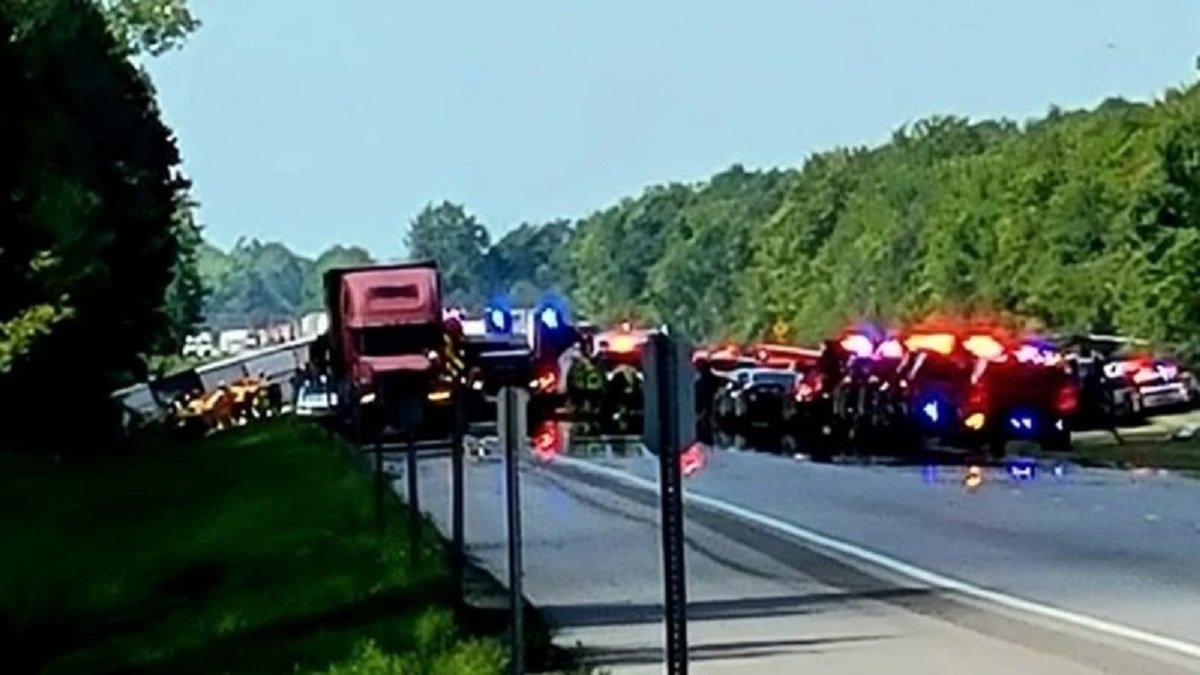
Contents
US, Aug.23,2025:The bus carried between 52 to 54 passengers ranging in age from 1 to 74 years. Many were tourists visiting from countries such as India, China, the Philippines, the Middle East
Immediate Aftermath of Niagara Falls bus crash
Niagara Falls bus crash shook the I-90 highway in New York on August 22, 2025. A tour bus returning from Niagara Falls veered off the road around Pembroke, roughly 25–40 miles east of Buffalo, and rolled into a ditch. The scene quickly turned chaotic and tragic.
The bus carried between 52 to 54 passengers ranging in age from 1 to 74 years. Many were tourists visiting from countries such as India, China, the Philippines, the Middle East, and the US.
Loss of Life & Injuries
The Niagara Falls bus crash resulted in five confirmed fatalities, including at least one child—though later reports clarified no children died.
Over 40 passengers sustained injuries ranging from cuts and fractures to serious trauma; many were ejected from the bus, with shattered windows increasing the danger.
Rescue Operations in Motion
Emergency response was swift and expansive. A fleet of medical helicopters—up to eight—alongside ambulances and air-medical services like Mercy Flight, transported victims to nearby hospitals.
Multiple hospitals—Erie County Medical Center, Rochester’s trauma center, and Batavia facilities—treated critical and stable patients.
Investigating the Cause
Authorities ruled out mechanical failure and impairment. Preliminary findings suggest the driver was distracted, lost control at full speed, and over-corrected—causing the rollover.
No other vehicle was involved, and the driver has been cooperative in ongoing investigations.
Voices & Official Reactions
New York Governor Kathy Hochul expressed heartbreak, stating her team was coordinating closely with law enforcement and emergency responders.
Senator Chuck Schumer and other officials also offered condolences and praised the bravery of first responders.
Translators were dispatched to the crash site to assist the multinational group of passengers.
Lessons and Safety Reflections
This Niagara Falls bus crash underscores serious concerns about seat belt usage; many passengers were unbelted and thus ejected during the rollover
Improved safety protocols—like mandatory seat belt enforcement and better driver monitoring—could prevent similar tragedies on busy interstate routes. External research indicates such measures reduce injury severity in rollover accidents.
The Niagara Falls bus crash is a devastating reminder of how quickly routine travel can turn catastrophic. Lives were lost, families shattered, and concerns about travel safety raised. Amid grief, the outpouring of support and the professionalism of responders brought vital hope.
Let this tragedy ignite stronger safety reforms, public awareness, and preparedness. For more on bus safety and disaster response frameworks, check out the National Transportation Safety Board reports and WHO road safety guidelines. (Link examples.)
Accident
Uttarakhand Chamoli Cloudburst Sparks Urgent Rescue
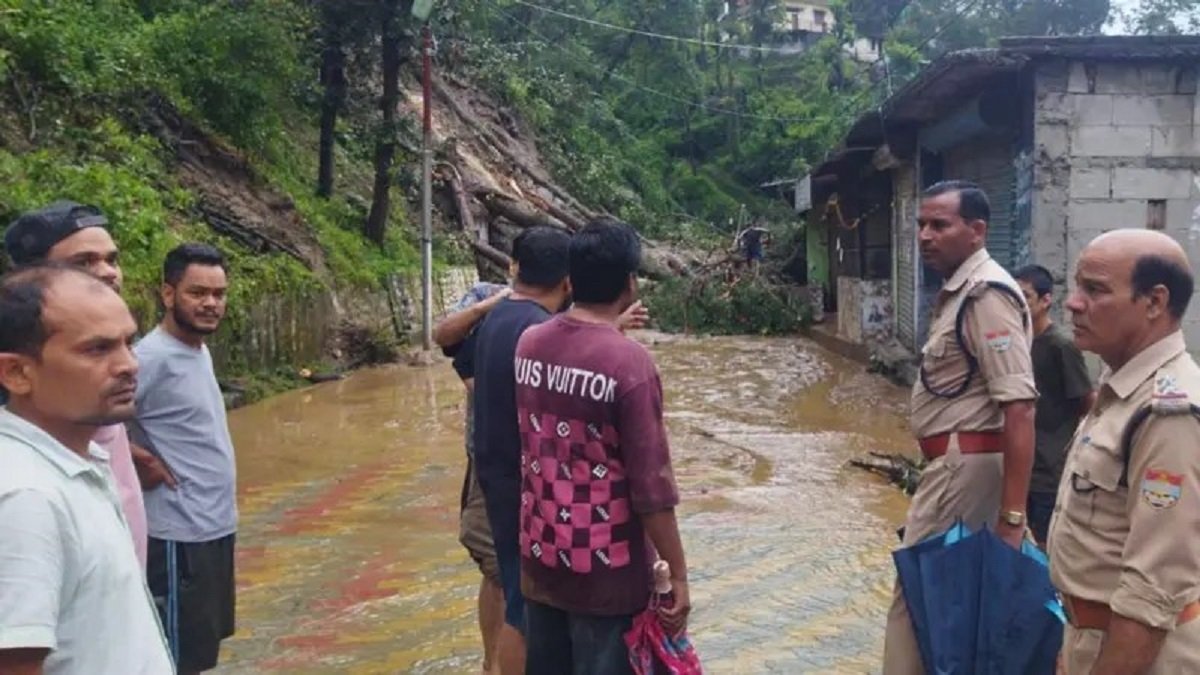
Contents
Uttarakhand, Aug.23,2025: At least two individuals remain missing—a young woman in Sagwara and a senior citizen in Chepdo—highlighting the tragic human toll. Roads like Tharali-Sagwara and Tharali-Gwaldam are blocked, schools in three development blocks suspended classes
Uttarakhand Chamoli Cloudburst Unfolds
Uttarakhand Chamoli Cloudburst struck the Tharali region late Friday night, igniting a harrowing chain of events. Debris surged into homes, markets, and critical buildings—including the SDM’s residence—leaving a trail of destruction and despair.
Extent of the Damage
The Uttarakhand Chamoli Cloudburst unleashed debris that engulfed the Tharali market and tehsil complex, burying vehicles and causing significant structural damage to shops and residences.
At least two individuals remain missing—a young woman in Sagwara and a senior citizen in Chepdo—highlighting the tragic human toll. Roads like Tharali-Sagwara and Tharali-Gwaldam are blocked, schools in three development blocks suspended classes, and relief camps have been established for displaced residents.
Rescue and Relief Efforts
Emergency responders have acted swiftly in the wake of the Uttarakhand Chamoli Cloudburst. Teams from SDRF, NDRF, the police, and the Indian Army were deployed immediately, supported by drones and search-and-rescue dogs.
Nearby relief resources such as ITBP, SSB, and NDRF units were dispatched from Gwaldam, Gauchar, and other locations. Chalking further severity, officials report vehicles entombed in mud and debris—hindering ground-level access.
Voices from the Ground
Chamoli’s District Magistrate Sandeep Tiwari warned of “a lot of damage” in the Tharali tehsil and confirmed multiple structures, including the SDM’s residence, were severely damaged.
Chief Minister Pushkar Singh Dhami expressed deep concern and relief oversight via his post on X: “…continuously monitoring the situation… praying for everyone’s safety”.
A local update from Hindi media revealed: “An elderly person and a 20-year-old girl are missing… debris reached the tehsil complex and several homes… rescue teams from SDRF, NDRF, and administration are already on site”.
Expert Perspective and Future Preparedness
This incident marks the second such calamity in Uttarakhand this August—just after the Dharali disaster in early August—suggesting a growing pattern of risky weather phenomena.
Scientists warn that rising temperatures and moisture levels are intensifying cloudburst events, particularly in mountainous regions like Uttarakhand.
Improved radar systems and upper-catchment monitoring are essential to reduce future losses in such high-risk zones.
In the face of this Uttarakhand Chamoli Cloudburst, the devastation is both physical and emotional. Homes lie in ruins, lives are unsettled, and rescue warriors race against time. Yet, amidst the crisis, hope persists—embodied by swift emergency action and heartfelt support.
Rapid data gathering, advanced weather tracking, and community preparedness are vital next steps to shield Uttarakhand’s Himalayan communities from future disasters. Read more, stay informed, and support relief efforts.

 Festival1 month ago
Festival1 month agoNag Panchami 2025: 7 Key Rituals and Puja Time to Eliminate Kaal Sarpa Dosha

 Festival1 month ago
Festival1 month agoHariyali Teej 2025 Is the Most Beautiful Festival for Women

 Accident3 weeks ago
Accident3 weeks agouttarkashi‑cloudburst‑flash‑flood‑devastation‑4‑dead

 Latest News1 month ago
Latest News1 month agoShocking Political Exit: Anmol Gagan Maan Resigns from AAP and Quits Politics – What’s Next for Punjab?

 Art1 month ago
Art1 month agoSattva, Rajas, Tamas” Come Alive on Canvas – Dr. Renu Shahi’s Indian Philosophical Art Shines in Sri Lanka

 Election2 months ago
Election2 months agoDAV Centenary Public School, Vaishali Nagar, Jaipur Event Report: Talent Hunt Show

 Education1 month ago
Education1 month agoYoung Athletes Shine in Inter-House Kho-Kho Competition (Classes III–V)

 Education2 months ago
Education2 months agoStrong Start to Senior Secondary: Vardhman Srikalyan International School Holds Class 11 Orientation & PTM






























